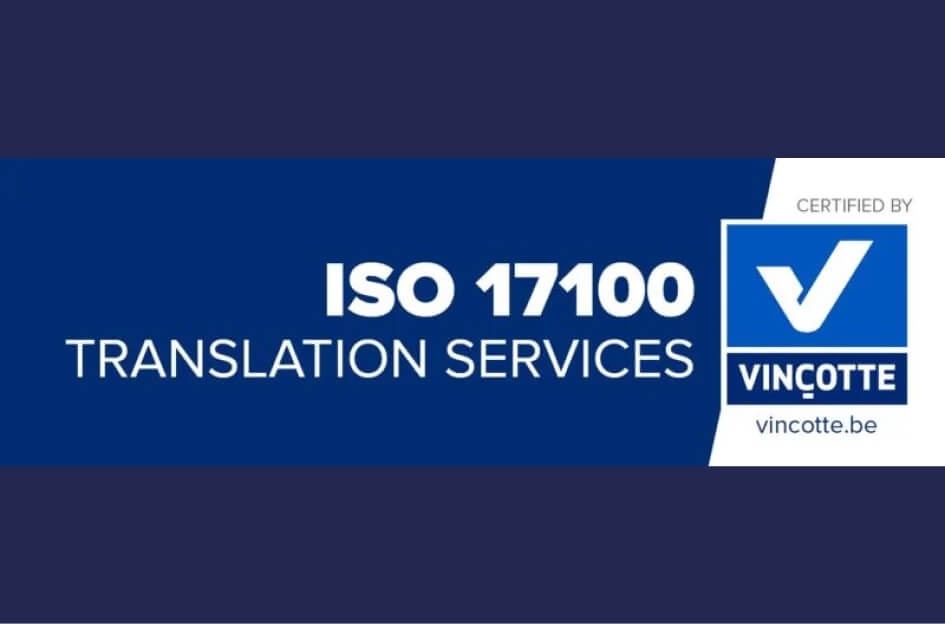Imagine you’re browsing a website to find product or service. You come across a translation company offering their services, promising accurate and reliable translations. It looks intriguing and you decide to try it.
But wait! How will you know that the company’s translations are high quality? How can you trust the company to convey your message to your target audience accurately?
This is where linguistic quality assurance in translation project comes into play. Quality assurance processes ensure that translated content maintains accuracy and consistency, leaving no room for errors or misinterpretations. By implementing effective quality control measures, translation companies can enhance customer satisfaction and build a reputation for delivering top-notch translations.
Translation quality control encompasses various techniques such as manual QA, instant QA using translation software, verification of the final translation against the source text, and more. These practices assess the translations quality assurance and identify any improvement areas.
In our next blog post, we will delve deeper into the world of translation quality control. We’ll explore different methods used by translation teams to maintain high standards and discuss how these practices benefit both clients and providers alike.
Stay tuned for valuable insights on ensuring impeccable translation quality!
Importance of Subject Matter Expert Translators
Subject matter expert translators play a crucial role in ensuring the quality assurance in translation. Their in-depth knowledge of specific industries or fields allows them to provide accurate and comprehensive translations that meet the needs of diverse audiences.
Let’s delve into why using subject matter expert translators is essential for achieving high-quality translations.
In-Depth Knowledge of Specific Industries or Fields
One of the key advantages of subject matter expert translators is their expertise in particular industries or fields. These professionals possess a deep understanding of industry-specific terminology, concepts, and nuances.
For example, a subject matter expert translator with experience in medical translation project will have extensive knowledge of medical jargon, pharmaceuticals, and healthcare practices.
This specialized knowledge enables them to accurately translate complex technical content, ensuring that the target audience receives information that is precise and easily comprehensible according to regional and cultural factors.
Enhanced Accuracy and Understanding
By utilizing subject matter expert translators, professional translation companies can significantly enhance the accuracy and understanding of translated content.
Translation professionals are subject-matter specialists and better able to to grasp the original texts’ context and intricacies. As a result, their translations capture original texts’ meaning and tone. The target audience can fully comprehend the message without any ambiguity or confusion.
Correct Translation of Technical Terminology
Technical terminology often poses challenges during translation project. However, subject matter expert translators excel at accurately translating such specialized terms across languages.
They possess an extensive vocabulary related to their field of expertise and are familiar with industry-specific jargon variations used worldwide. Consequently, they can effectively convey complex technical information while maintaining precision and consistency throughout the translated text.
Subject matter expert translators bring immense value by bridging language gaps within specific industries or fields. Their expertise ensures that translations cater to various purposes such as academic research papers, legal documents, marketing materials, or technical manuals.
By collaborating with these experts, translation companies can guarantee that the target text is not only linguistically accurate but also culturally appropriate for the intended audience.
Leveraging Desktop Publishing and Multimedia Teams
Desktop publishing teams and multimedia teams play a crucial role in ensuring the quality control of translated content. By collaborating with these specialized translation team, companies can enhance the overall quality of their translated materials, making them visually appealing and properly formatted for the target language translation for audience.
Desktop Publishing Team: Ensuring Visual Appeal and Proper Formatting
A dedicated desktop publishing team is responsible for ensuring that translated documents maintain a visually appealing layout consistent with the original design.
They work closely with project manager, linguistic quality assurance experts, editors, and translators to integrate the translated text seamlessly into various documents.
The desktop publishing team utilizes technology and specialized tools to format the translated content accurately.
They align the fonts, images, tables, and other elements according to company’s quality and formatting standards. Their attention to detail polishes the final product and keeps up with quality standards.
For example:
They adjust line breaks to prevent awkward word placements.
They resize images or graphics as needed.
They ensure consistency in font styles throughout the document.
By working alongside translators project manager, and editors, desktop publishing teams can address any formatting issues promptly.
Their expertise in layout design guarantees that the final translated document is visually appealing while maintaining accuracy.
Multimedia Team: Handling Audio, Video, and More
Multimedia elements such as audio recordings, videos, animations, or interactive components often accompany translations.
A dedicated multimedia team handles these aspects during translation projects. Their role is to ensure that all multimedia elements are correctly localized for different target audiences.
The multimedia team works closely with translators to adapt audio scripts or subtitles accurately. They also handle video synchronization by aligning spoken words with on-screen actions or visuals.
This collaboration between translators and multimedia specialists results in high-quality translations that resonate effectively with diverse audiences.
In addition to audiovisual content, multimedia teams also focus on adapting other interactive components such as e-learning modules or mobile applications.
Their expertise ensures seamless integration of localized content while maintaining functionality and user experience.
Collaborating for Enhanced Quality
By leveraging the expertise of both desktop publishing and multimedia teams, companies can achieve a higher level of quality control in translation projects.
The collaboration between these specialized teams and the entire translation team leads to improved accuracy, visual appeal, and overall user experience.
Desktop publishing teams ensure that translated content is visually appealing and properly formatted, while multimedia teams handle audio, video, and other interactive elements.
This collaborative effort enhances the final product’s quality by addressing any formatting or localization issues promptly.
Clients who partner with Wordminds Translation Service can benefit from the seamless integration of desktop publishing and multimedia expertise into their translation projects.
By entrusting their materials to a company that values quality control at every stage of the process, clients can confidently reach their target audience with exceptional translations.
Centralization of Work: Streamlined Workflow
Centralizing translation work has numerous benefits, including improved coordination among team members and a more streamlined workflow.
By bringing all translation tasks under one roof, companies can ensure consistency in the translation process and reduce errors and delays.
One of the key advantages of centralization is better coordination among team members. When translation work is scattered across different departments or individuals, it becomes challenging to keep everyone on the same page.
Miscommunication and confusion can easily arise, leading to inconsistencies in the translated content. However, by centralizing the process, teams can collaborate more effectively, ensuring that everyone is working towards a common goal.
Streamlining workflows is another significant advantage of centralization. With a centralized approach, companies can establish standardized processes for translation projects.
This allows for clear guidelines and steps to be followed consistently from start to finish. As a result, errors are minimized, and unnecessary delays are avoided.
Consider this scenario: Without centralization, each translator may have their own way of approaching a project. One translator might prefer to begin with proofreading before moving onto editing, while another might take an entirely different route.
Such inconsistencies not only waste time but also compromise the quality of translations. However, with centralized work processes in place, there is a defined order and set of steps that every translator follows. This ensures that translations progress smoothly without any ambiguity or confusion.
Furthermore, centralization enables better project management and resource allocation. When all translation work is consolidated in one place, it becomes easier for project manager to oversee the entire process efficiently. They can assign tasks based on workload distribution and monitor progress at every stage.
Resource allocation also becomes more effective when work is centralized. Instead of having translators waiting idly for their turn or juggling multiple projects simultaneously due to poor coordination between teams, centralization allows project manager and team members to allocate resources strategically based on availability and expertise.
Understanding the Translation Process for Quality Control
Understanding each stage of the translation services process helps identify potential areas for quality control measures. Proper planning at every step ensures high-quality translations.
Effective communication between translators, editors, and proofreaders is important for quality control.
The computer assisted translation and human translation process comprises several stages which ensure final translation accuracy and final product quality.
Translators, by understanding these stages, implement appropriate quality control measures throughout the entire process.
Pre-translation Planning: This stage involves gathering all relevant information about the project, including client requirements, target audience, and specific terminology. Thorough research and preparation ensure that translators have a clear understanding of what is expected from them.
Translation: The actual translation work takes place in this stage. Translators meticulously convert the source text into the target language while maintaining its meaning and context. They need to pay attention to grammar, syntax, cultural nuances, and style guidelines to produce accurate translations.
Editing: Once the initial translation is complete, an editor reviews it for consistency, clarity, and overall quality. They ensure that the translated text adheres to any specified guidelines or instructions provided by the client or project managers.
Proofreading: In this stage, a proofreader carefully examines the edited translation for errors in grammar, spelling, punctuation, formatting inconsistencies, or any other linguistic issues that might affect its quality. Proofreading plays a crucial role in catching any mistakes or omissions that may have been overlooked during editing.
Effective communication among translators, editors, and proofreaders is vital throughout these stages to maintain consistency and address any questions or concerns promptly.
By following these steps diligently and incorporating suitable quality control measures at each stage of the translation process:
Implementing a comprehensive translation management system and review system where multiple professional translation company contributes their expertise.
Utilizing glossaries and style guides to maintain consistency in terminology and writing style.
Regular team meetings help in discussing any challenges or questions that arise during the translation process.
Translators improve the final product’s quality standards. Their acumen not only enhances the translations’ accuracy and credibility but also helps build clients’ and end-users’ trust.

Defining Quality in Translation
Quality translation is the cornerstone of effective communication across languages. It involves accurately conveying the meaning of a text while maintaining linguistic fluency.
Accurate Rendering of Meaning
At its core, quality in translation revolves around accurately capturing the intended meaning of the source text. A high-quality translation keeps message intact, so the target audience can fully comprehend the meaning and engage with the content. Skilled translators who possess a deep understanding of source and target languages can make this kind of communication happen.
To achieve accurate rendering of meaning, translators must carefully analyze each sentence, considering not only individual words but also their context within the entire text. They need to grasp subtle nuances, cultural references, and idiomatic expressions to ensure an authentic interpretation.
Consistency in Style, Tone, and Terminology
Another vital aspect of quality translations is consistency. Translators must maintain a consistent style, tone, and terminology throughout the entire document or project. This creates cohesion and prevents any confusion for readers.
Consistency in style means adapting the translated text to match the original document’s writing style. Whether it’s formal or informal language usage or specific industry jargon, maintaining consistency helps preserve the intended voice and tone.
Moreover, using consistent terminology is crucial for technical or specialized translations. This ensures that key terms are consistently translated across various documents within a domain or company-specific glossary.
Meeting Client Requirements and Expectations
Ultimately, determining whether a translation meets quality standards depends on satisfying client requirements and expectations. Each client may have unique preferences regarding formatting guidelines, delivery deadlines, or specific instructions related to their industry or target audience.
Translators should actively engage with clients to understand their needs fully. Regular communication allows them to clarify any doubts or seek feedback during different stages of the translation process. By aligning with client expectations from project initiation to completion, translators can deliver high-quality translations that meet or exceed their clients’ requirements.
Maximizing Review Processes: Bilingual and Monolingual Reviews
Bilingual reviews play a crucial role in ensuring the accuracy of translated content. This process involves comparing the source text with its translated version by bilingual reviewers. By having individuals proficient in both the source and target languages, any discrepancies or errors can be easily identified and rectified. These reviewers possess a deep understanding of cultural nuances, idiomatic expressions, and technical jargon, enabling them to provide valuable feedback on the quality of the translation.
On the other hand, monolingual reviews focus solely on reviewing the target language text for clarity, grammar, style, and other linguistic aspects. This step ensures that the translation reads smoothly and naturally to its intended audience. Monolingual reviewers are experts in their native language and possess an innate sense of what sounds right or wrong. They scrutinize every aspect of the translated content to ensure it meets high standards.
By incorporating both bilingual and monolingual reviews into the quality control process, organizations can maximize error detection. While bilingual reviewers primarily focus on accuracy and faithfulness to the source text, monolingual reviewers bring a fresh perspective by examining how well the translation resonates with native speakers. This two-step approach significantly reduces the likelihood of errors slipping through unnoticed.
During bilingual reviews, reviewers compare specific elements such as terminology usage, sentence structure, tone consistency, and overall coherence between source and target texts. They meticulously analyze each phrase to ensure faithful representation while adapting it appropriately for cultural nuances or regional preferences. Any deviations from accuracy are promptly flagged for revision.
In monolingual reviews, attention is directed towards evaluating readability, fluency, grammar usage, punctuation adherence, stylistic choices, and overall impact on readership experience within a particular language context. By focusing solely on these aspects without being influenced by knowledge of the source text or potential mistranslations therein; monolingual reviewers offer fresh insights into linguistic improvements that enhance comprehension and engagement.
By combining the expertise of bilingual and monolingual reviewers, organizations can create a comprehensive quality control process that leaves no room for errors. The feedback provided by these reviewers ensures translations are not only accurate but also culturally appropriate, stylistically consistent, and linguistically sound.
Managing Linguistic Queries and Overcoming Risks
We discussed the importance of subject matter expert translators who possess deep knowledge and understanding of the specific domain. Leveraging desktop publishing and multimedia teams can also enhance the overall quality of translations by ensuring that the formatting and visual elements are accurately represented. Centralizing work and streamlining workflows can help eliminate bottlenecks and improve efficiency in the translation process.
Understanding the translation process itself is crucial for effective quality control. By defining what constitutes quality in translation, you can set clear standards for your translators to follow. Maximizing review processes through bilingual and monolingual reviews allows for thorough evaluation of translated content.
To ensure high-quality translations, it’s essential to work with reputable language service providers who prioritize accuracy, cultural sensitivity, and linguistic expertise. Conduct thorough research before selecting a provider to guarantee reliable results. Remember to communicate your expectations clearly and provide necessary context to facilitate smooth collaboration.
FAQs
What is the role of a subject matter expert translator?
Subject matter expert translators play a vital role in ensuring accurate translations within specific domains such as legal, medical, or technical fields. They possess extensive knowledge of specialized terminology and industry-specific nuances, enabling them to produce high-quality translations that reflect both linguistic accuracy and subject matter expertise.
How does centralization of work streamline translation workflows?
Centralization of work involves consolidating all translation-related tasks into a single hub or platform. This approach streamlines communication, eliminates redundancies, reduces errors caused by miscommunication or version control issues, and improves overall efficiency throughout the translation process.
Why are bilingual and monolingual reviews important in quality control?
Bilingual reviews involve having a second translator review the translated content alongside the original text to identify any discrepancies or errors. Monolingual reviews involve having a native speaker of the target language review the translated content without comparing it to the source text. Both types of reviews provide valuable insights and help ensure accuracy, fluency, and cultural appropriateness in the final translation.




